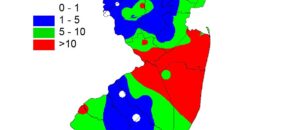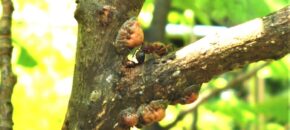Attention: There have been significant increases in CEW moth catches in pheromone traps in parts of the state during the past 2 days. At this time, these increases are largely in southwestern NJ, although elevated catches have occurred as far north as Warren County. Noteworthy Sweet Corn catches include: Eldora (Cape May)- 187/night Green Creek […]
Continue reading...Managing Cranberry Toad Bugs

Populations of the cranberry toad bug, Phylloscelis rubra (Figure 1), have increased in the last week in some beds. In a recent study, we showed that even relatively low densities of this insect can cause significant injury to cranberries (Rodriguez-Saona et al. 2020. Characterizing the Feeding Injury Caused by Phylloscelis rubra (Hemiptera: Dictyopharidae) to Cranberries, […]
Continue reading...Vegetable IPM Update 08/10/22

Sweet Corn European corn borer (ECB) moth catches remain stable at low levels throughout the state. ECB population maps will resume if second flight catches rise to high enough numbers. Only occasional feeding in sweet corn has been detected by field personnel. The highest nightly trap catches of ECB for the week ending 08/10/22 are […]
Continue reading...Postharvest Backflow Prevention Strategies for Produce Farms

Listen to Wes Kline discuss how to build a one-way street for water in produce packinghouses. The fundamentals of water distribution, the FSMA PSR, and practical ways of implementing backflow prevention are covered. Click on the image below to access the YouTube video.
Continue reading...Pepper anthracnose ALERT: 08-09-22
Pepper anthracnose has been confirmed in southern New Jersey. For more information on its control please click here.
Continue reading...Common Backyard Beneficials

Too often, landscape plant managers ignore or confuse beneficial organisms with insect pests and inappropriately apply control materials. This is especially the case with the larvae or immature stages of beneficial insects. An observant and knowledgeable IPM scout needs to learn how to recognize and conserve these “good guys,” so they are not needlessly destroyed. […]
Continue reading...